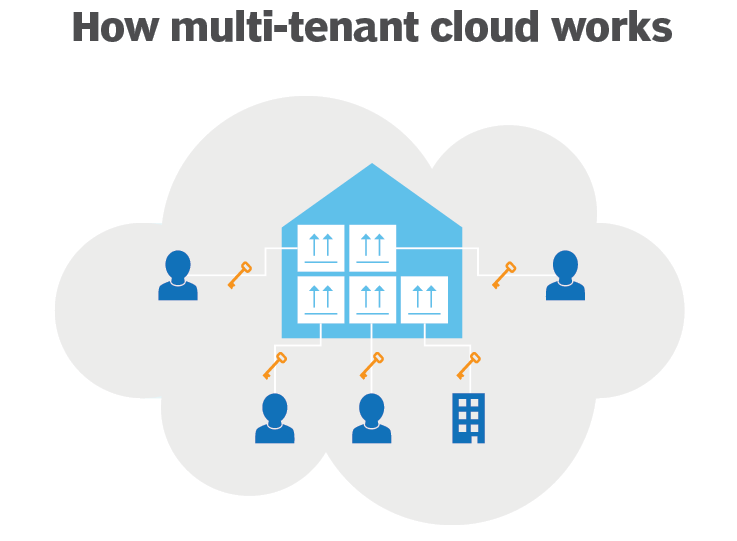A multi-tenant cloud is a cloud computing architecture that allows customers to share computing resources in a public or private cloud. Each tenant's data is isolated and remains invisible to other tenants.
In a multi-tenant cloud system, users have individualized space for storing their projects and data. Each section of a cloud network with multi-tenant architecture includes complex permissions with the intention of allowing each user access to only their stored information along with security from other cloud tenants. Within the cloud infrastructure, each tenant's data is inaccessible to all other tenants, and can only be reached with the cloud provider's permissions.
In a private cloud, the customers, or tenants, may be different individuals or groups within a single company, while in a public cloud, entirely different organizations may safely share their server space. Most public cloud providers use the multi-tenancy model. It allows them to run servers with single instances, which is less expensive and helps to streamline updates.
 Multi-tenant cloud vs single-tenant cloud
Multi-tenant cloud vs single-tenant cloud
In a single-tenant cloud, only one customer is hosted on a server and is granted access to it. Due to multi-tenancy architectures hosting multiples customers on the same servers, it is important to fully understand the security and performance the provider is offering. Single-tenant clouds give customers more control over the management of data, storage, security and performance.
 Benefits of multi-tenant cloud
Benefits of multi-tenant cloud
Multi-tenant cloud networks provide increased storage and improved access compared to single-tenancy clouds that include limited access and security parameters. Multi-tenancy in cloud computing makes a greater pool of resources available to a larger group of people without sacrificing privacy and security or slowing down applications. The virtualization of storage locations in cloud computing allows for flexibility and ease of access from almost any device or location.
Example of multi-tenancy
Multi-tenant clouds can be compared to the structure of an apartment building. Each resident has access to their own apartment within the agreement of the entire building and only authorized individuals can enter the specific units. However, the entire building shares resources such as water, electricity and common areas. This is similar to a multi-tenant cloud in that the provider sets overarching quotas, rules and performance expectations for customers but each individual customer has private access to their information.

